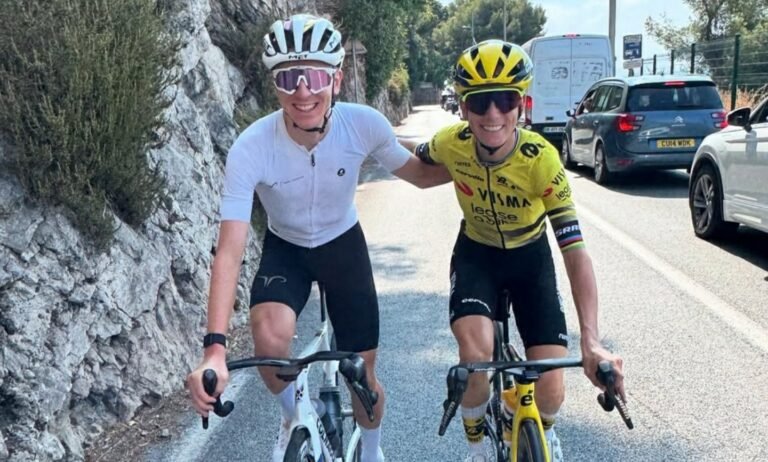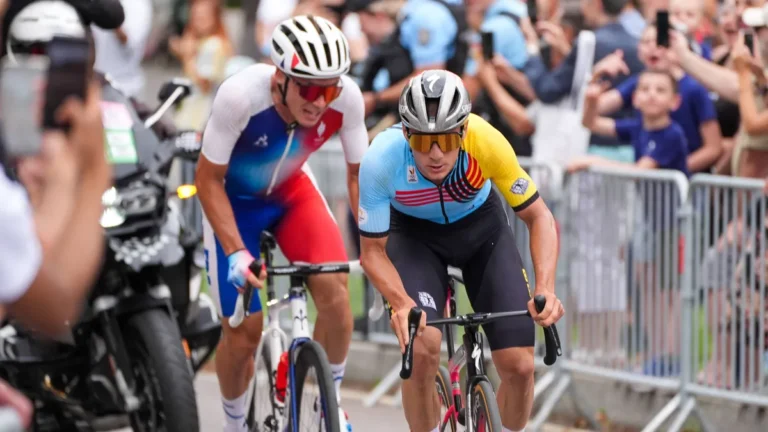
The competition between Tadej Pogacar and Jonas Vingegaard has shaped the contemporary landscape of the Tour de France. Before the 2025 edition, Vingegaard has a significant point to demonstrate, particularly given the overwhelming supremacy Pogacar has shown in the past two years.
Beginning this Sunday, the duo will compete against each other again in a pre-Tour de France event as they clash at the 2025 Critérium du Dauphiné. Danish cycling legend Bjarne Riis states that this may serve as a true assessment of Vingegaard’s position against his significant competitor. “There’s no question that Dauphiné provides a solid indication,” Riis remarks for BT.dk. “However, it’s not conclusive — we’re unaware of how each competitor has trained, or if they’re competing at full capacity.”
Riis is certain that if Vingegaard wants to recover the Maillot Jaune at the Tour de France this summer, he must deliver his best performance yet. “Jonas demonstrated great strength when he claimed victory in the Tour in 2023,” he explains. “However, it’s insufficient to surpass the Pogacar we’re witnessing today.” He’s operating on an entirely different level now, and Visma must understand that. Pogacar has improved significantly.
“I am confident Jonas will perform well — but whether he has advanced sufficiently compared to Pogacar two years ago, that’s the key question,” the Dane adds. “The two haven’t genuinely faced off since then, not with both at their best.”
Even last year, when several of Vingegaard’s statistics reached their peak, they won’t suffice if he can’t maintain them for three weeks – as Riis points out. “Pogacar only needed to defend last year — he was never truly under pressure,” remarks the 61-year-old. “Only on the day Jonas secured his stage — and even then, Pogacar was ahead, erred, and still didn’t lose any time.”
Therefore, much depends on a favorable Dauphiné for Vingegaard, to establish some form and momentum. “I’m eager to find out how much muscle Jonas has rebuilt — and how toned he is,” Riis remarks. “Climbing effectively is important, but he also requires robust muscles.” “That can only be achieved through training and dedicated effort.”
“Pogacar’s burst of speed has significantly enhanced, and that might be the crucial element if they are evenly balanced.” “If Jonas fails to match his kick, Pogacar could quickly take 10 seconds here, and 20 seconds there,” concludes the 1996 Tour de France champion. “In the time trials, I believe they are quite similar — provided Jonas performs well.”
As the cycling world eagerly anticipates another fierce clash between Tadej Pogacar and Jonas Vingegaard, all eyes turn toward the Critérium du Dauphiné — the traditional proving ground ahead of the Tour de France. The 2025 edition promises an early spark to what could be another unforgettable showdown. For Danish fans and the Team Visma-Lease a Bike squad, this moment also serves as a litmus test to evaluate whether Vingegaard is truly ready to challenge a seemingly unstoppable Pogacar.
The evolution of Pogacar over the last two seasons has raised the bar in professional cycling. While Vingegaard delivered a masterful and dominant win in the 2023 Tour de France, Pogacar has grown into a more complete and dangerous rider. Bjarne Riis, one of Denmark’s most iconic cycling figures, has been candid in acknowledging the gulf between the two riders at this stage.
Riis’ comments reflect not only a realistic assessment of the current pecking order but also a subtle challenge to Vingegaard and Team Visma. It is a call to acknowledge that the Slovenian’s progression demands more than just physical preparation — it requires strategic and technical brilliance. Pogacar has added new layers to his repertoire: improved time-trial ability, faster accelerations in the mountains, and a seemingly endless reservoir of endurance.
Visma’s task now, Riis suggests, is not just to support Vingegaard physically but also to reimagine their tactics. Pogacar’s consistency and versatility have rendered conventional stage-race planning less effective. In past seasons, Visma has relied heavily on team depth and stage control. However, with Pogacar now capable of attacking in nearly every terrain, those strategies may no longer suffice.
Vingegaard’s success in 2023 was built on targeted mountain attacks and a time-trial where Pogacar faltered. But Riis emphasizes that such moments are unlikely to repeat themselves. Pogacar, in his current form, doesn’t allow those same margins. His superior punch — especially on short, steep finishes — could be decisive. As Riis notes, if Pogacar takes seconds here and there, the cumulative effect over three weeks could be insurmountable.
Dauphiné becomes not just a race, but a diagnostic tool. It’s where we may get a clearer glimpse of Vingegaard’s recovery from his spring training setbacks and his real-time fitness. The physical rebuilding Riis mentions is more than about power numbers — it’s about durability, resistance, and muscle tone over long durations, particularly in back-to-back mountain stages.
Another dimension of Riis’ analysis is psychological. Vingegaard must not only be physically ready but mentally resolute. The shadow of Pogacar’s dominance may create internal pressure. Winning stages or time trials is not enough; matching Pogacar’s intensity and recovering daily with the same fire is where the real battle lies. And until both riders go toe-to-toe in the same race at full throttle, we can only speculate.
Riis rightly notes that the pair have not clashed at full strength since 2023. Injuries, scheduling differences, and race strategies have kept them apart. Thus, Dauphiné’s significance grows — not necessarily as a prediction tool, but as a performance barometer. It will offer clues about who’s peaking at the right time.
As the Tour de France draws nearer, it’s clear from Riis’ reflections that the stakes are higher than ever for Jonas Vingegaard. The Dane must not only return to his former level but exceed it if he wishes to reclaim the yellow jersey. Tadej Pogacar is no longer the prodigious talent of 2021 or the slightly inconsistent challenger of 2022 — he’s evolved into an all-around juggernaut.
Whether Vingegaard can close the gap in time remains to be seen. But one thing is certain: the 2025 Tour de France will be defined once again by this extraordinary rivalry — and what begins at the Dauphiné will give us our first real taste of the fireworks to come.


